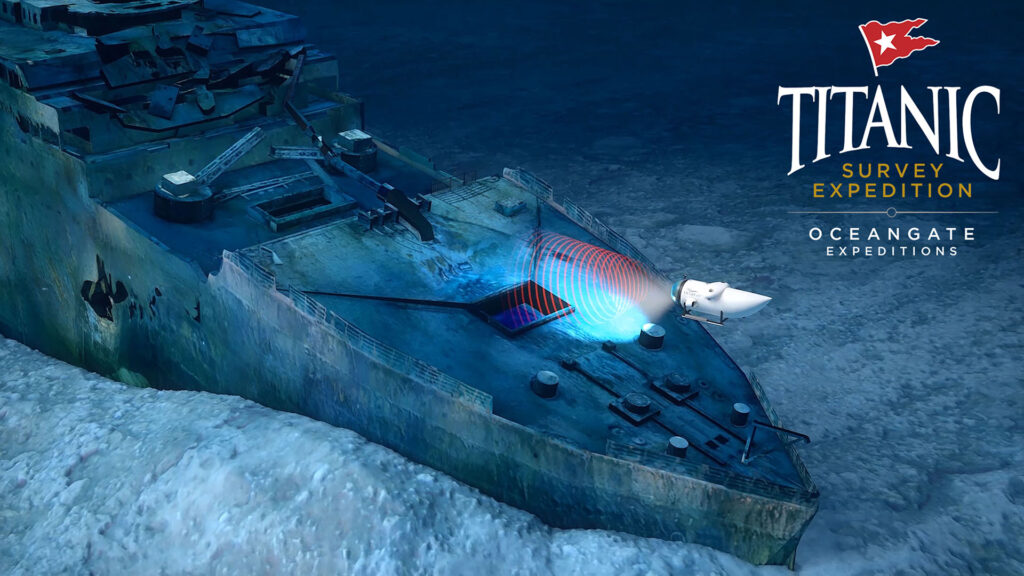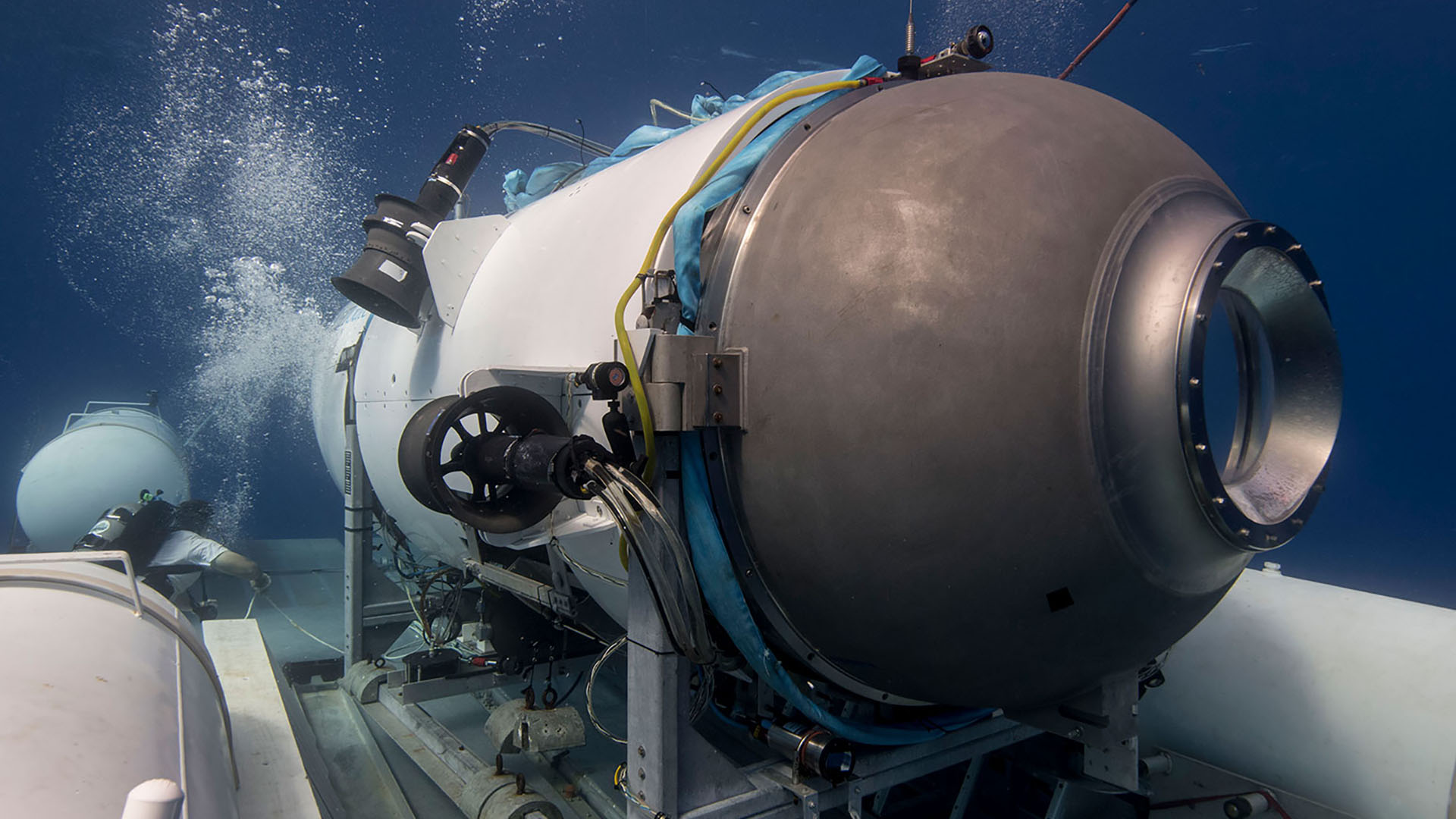Five years before the disappearance of the Titan submarine, which was on its way to explore the Titanic, serious doubts were already emerging about the ability of the submersible to dive so deep under water. For specialists in the sector, the vehicle should probably not have approached the liner. In any case, not like that.
Resting at a depth of 3,821 meters, in the North Atlantic, and off Newfoundland, the wreck of the Titanic was the subject of an underwater expedition in June 2023. But since the 18th, the crew who boarded the Titan submersible is missing. Significant search resources were deployed in the area to find them. We must act quickly: the oxygen reserves on board should run out by Thursday 22 June.
Whatever the outcome of this salvage operation, the company that provided the Titanic to visit Titanic, OceanGate, will not escape the burgeoning controversy emerging in the press. Was the private submarine really capable, technically, of descending to a depth of around 4,000 meters, in complete safety? Elements dating back to 2018 suggest that the Titan was not cut out for such an adventure.
Officially, the technical sheet of the submersible ensures that the vehicle can accommodate five people on board (there are currently five, including two Pakistanis, an American, a Briton and the Frenchman Paul-Henri Nargeolet, Titanic specialist). The Titan is also supposed to descend to a depth of 4,000 meters without difficulty. Just enough to approach the iconic liner with a good safety margin.
OceanGate, which markets through the Titan a tourist experience to the wealthiest, also claims to use a “ unparalleled safety device that assesses hull integrity on every dive “. This surveillance in real time “, which mobilizes acoustic sensors and strain gauges, makes it possible to know the pressure effects undergone by the ship during the descent and ” to accurately assess the integrity of the structure. »
In principle, all this should allow ” the pilot to be alerted quickly and to have enough time to stop the descent and return to the surface safely “, adds the descriptive page of OceanGate. But that scenario didn’t happen this week. Obviously, the machine encountered a problem, the nature of which is not yet elucidated. This is where the 2018 case could shed new light on the Titan.
An overly experimental and not well tested submarine
Five years ago, a former OceanGate employee was fired by his employer after expressing serious doubts about the Titan’s ability to descend so deeply below the surface of the water. This is reported by the New York Times and New Republic in their June 20 edition. At the time, ex-employee David Lochridge served as director of marine operations for OceanGate.
In his lawsuit against OceanGate, David Lochridge, for example, pointed out that the porthole which allows passengers to see the outside of the boat was only certified for a depth of 1,300 meters (three times less than where the titanic). ” Customers were unaware of and were not advised of this experimental design “, affirmed at the time the lawyers of the ex-employee.
When he was still in post at OceanGate, according to court documents consulted by the two media, David Lochridge was preparing a report which turned out to be very critical of the boat: he considered that it was necessary to drive much more of tests and had warned of “ potential dangers to Titan passengers when the submersible reaches extreme depths — a warning that today takes on a particular hue.
” Customers were unaware of and were not advised of this experimental design »
For its part, OceanGate considered that David Lochridge was, on the one hand, not qualified as an engineer, that he refused to accept the information provided by the company’s engineers and that the surveillance system invented by OceanGate was higher than the test he deemed necessary. And in addition, OceanGate filed a complaint against its ex-employee accusing him of having shared confidential information outside the company.
However, the secretiveness alleged against OceanGate regarding the experimental design of the Titan now seems to be partly contradicted by testimonies from members of former expeditions – OceanGate has already carried out two expeditions to the site of the Titanic, in 2021 and 2022. these went well overall, even if problems had been noted – incidents that were not a priori critical to the point of abandoning the 2023 expedition.
“You have to sign a waiver before getting on and death is mentioned three times on page one”
According to former New York Times columnist David Pogue, documents must be signed before boarding in which the Titan is described as an “experimental vessel” that had not been “approved or certified by any regulatory agency, and which could result in physical injury, emotional trauma or death”. Screenwriter Mike Reiss, producer of the animated series The Simpsons, said more or less the same thing to the BBC, quoted by Le Monde: “You have to sign a waiver before you go upstairs and death is mentioned three times on page one. This is not a coach vacation, it can go wrong. »
The thing is, David Lochrdige wasn’t alone in worrying about the perhaps too experimental, and arguably under-verified, nature of the private submarine. The New York Times thus refers to: more than three dozen people who were concerned about OceanGate’s decision not to conduct a standard assessment of the gear. Among the critics, seabed explorers, oceanographers and other players in this sector.


These personalities had sent a letter to the company to warn it of the risks ” catastrophic that could arise during a mission to the Titanic, with a craft not going through the normal process of inspection and certification by an agency specializing in this task. Also according to court documents, OceanGate was “not unwilling to pay to carry out this evaluation.
However, the signatories of the missive, all of whom were members of the Manned Underwater Vehicle Committee of the Marine Technology Society, a 60-year-old industry group that promotes, studies and teaches the public about ocean technologies, were concerned about the attitude of ‘OceanGate: The company claimed to meet or exceed industry security standards, but did not formally submit to them for proper certification.
For the specialists, OceanGate’s communication around the performance of the Titan was in fact, ” minimally misleading and everyone said they were worried about this trajectory. ” Although it requires additional time and expense, we agree that this third-party validation process is an essential part of the warranties that protect all submersible occupants. said the letter.
This kind of control is precisely intended to detect structural failures, when it is well carried out. The 737 Max affair showed how crucial these checks are for passenger safety, when they are carried out properly. However, it is not yet certain that it is an equivalent scenario that played out for the Titan – especially since underwater noises have been detected, which could be the sign of an attempt by the crew to report.
These revelations in the press could well be fatal in the long term for the activities of OceanGate. Much will also depend on the epilogue of this story, the fate of the crew and observations on the state of the submarine. In 2019, the company’s founder, Stockton Rush, nevertheless welcomed a ” sector is extremely safe, because it is subject to all these regulations. But it hasn’t innovated or grown either, because it has all these regulations. »
Claims made as part of a Smithsonian Mag report, which are partially inaccurate. Legal experts have recently pointed out that submersibles are much less regulated than surface ships. Especially when they operate in international waters — where the Titanic lies. But it is another phrase uttered by Stockton Rush that resonates tragically today, rebounding cruelly in the news: ” There has been no accident in the commercial submarine industry for over 35 years. »
If you liked this article, you will like the following ones: do not miss them by subscribing to Numerama on Google News.
